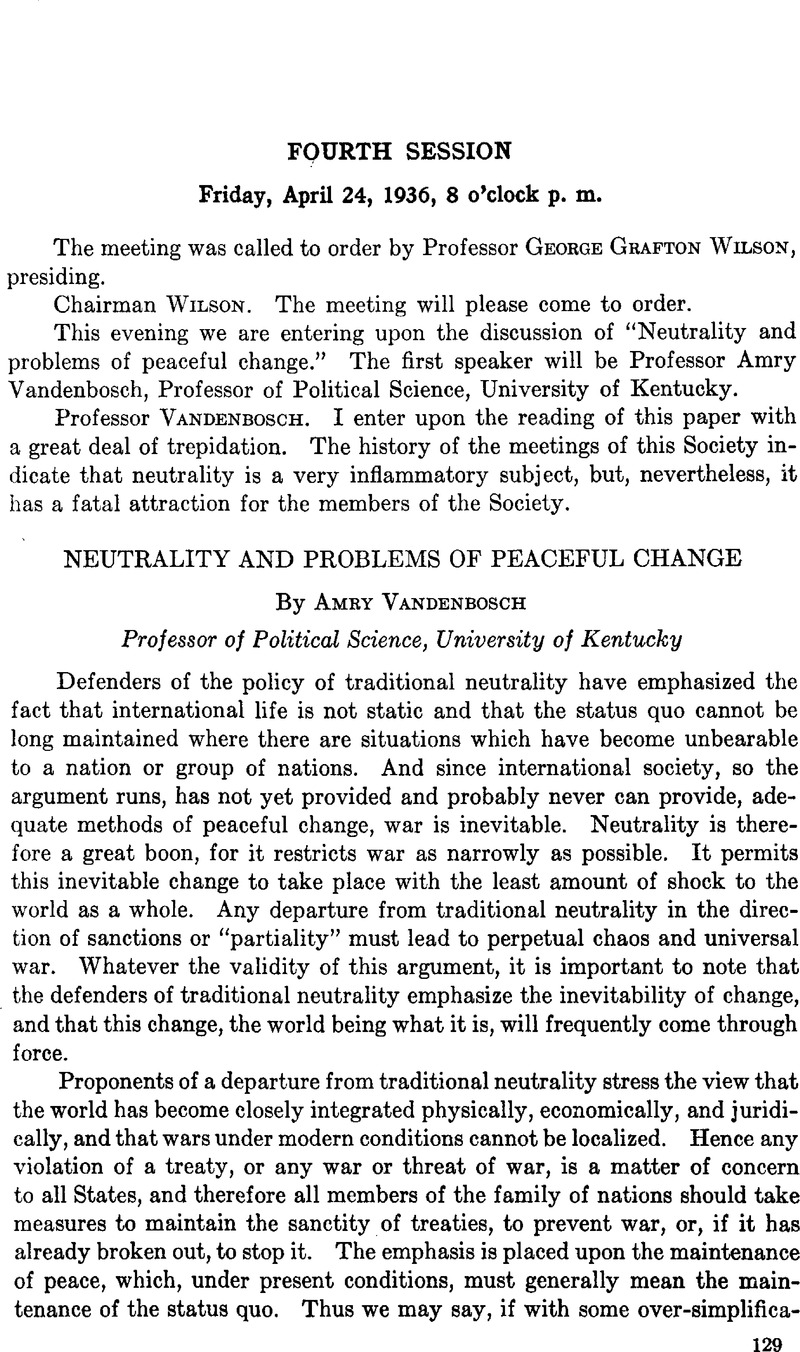Published online by Cambridge University Press: 27 February 2017

1 See Baker, , Life and Letters of Woodrow Wilson, Vol. V, Neutrality Years, pp. 1-18 Google Scholar.
2 Vandenbosch, Neutrality of the Netherlands during the World War, p. 24.
3 Turlington, Edgar, Neutrality : Its History, Economics and Law, Vol. III. The World War Period.
4 Neutrality: Its History, Economics and Law, Vol. IV. Today and Tomorrow, by Philip C. Jessup.
5 Foreign Relations, 1915, p. 796.
6 See C. C. Hyde, “Arms Traffic from Standpoint of International Law,” Proceedings of the Academy of Political Science, January, 1935.
7 New York Times, Oct. 7, 1935.
8 This problem was apparently discussed at a recent meeting of the board of the Bank for International Settlements. See report in New York Times, April 7,1936.
9 Switzerland, for example, in spite of its neutralized status, is applying mild economic eanctionist measures against Italy.
10 Neutrality: Today and Tomorrow, p. 210.
11 Page 9.
12 Presidential address, American Political Science Association, 1914, American Political Science Review, 1915, p. 13.
13 Quoted by Maclver, The Community, p. 410.
14 Maclver, op. cit., p. 422. This is the view underlying Art. 11 of the Covenant. It is apparently also the view of Secretary Hull. “Under the conditions which prevail in the world today a threat of hostilities anywhere cannot but be a threat to the interests—political, economic, legal and social—of all nations. Armed conflict in any part of the world cannot but have undesirable and adverse effects in every part of the world.” Statement of Sept. 11,1935, reminding Italy and Ethiopia of their obligations under the Briand-Kellogg Pact.